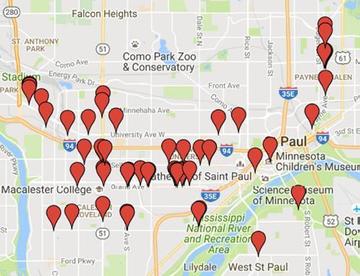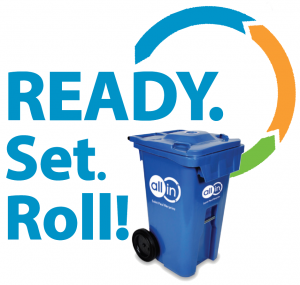|
This summer, after about 8 months of considering various policy options and getting feedback from community stakeholders, the City Council adopted a new ordinance requiring all employers in St. Paul to begin offering all employees Earned Sick and Safe Time (ESST) beginning in July, 2017. While a couple dozen other cities and 4 states have adopted similar policies in recent years, St. Paul’s policy is perhaps the most universal and broad of any in the country. The ordinance requires employers to allow employees to beginning accruing ESST immediately, to accrue at a rate of one hour per every 30 hours worked, capped at a minimum of 48 ESST hours that can be earned in a year.
My goal in pursuing this ordinance was to take a bold stand on behalf of the thousands of people in low-wage jobs in St. Paul who are faced with impossible decisions about whether to go to work sick or risk not having enough money to pay rent or put food on the table. In many cases people who don’t currently have ESST work in jobs that involve a high level of interaction with the public, including food service and hospitality, making improved public health a great secondary benefit of the new ordinance. As a parent, I remember very clearly the days when my kids were in daycare and I would get that call telling me that one of the kids was sick and had to go home. I have always worked in salaried positions that allowed me the flexibility to take that time off from work when I needed to. Others who leave work in these circumstances lose wages and some cases even risk being fired.
 Saint Paul businesses supportive of ESST (link to map below)..
I heard from hundreds of constituents and others
across the City who were strongly in favor of the ordinance. A group of more than 50 Saint Paul businesses supported the new ordinance,
including Ward 4 businesses Workhorse Coffee, Lake Monster Brewing,
Kopplin’s Coffee, and Fusion Salon. Throughout the public process, I
also heard from many business owners who had strong concerns about this
new ordinance. Some businesses that do not offer ESST to all employees
are concerned that this new mandate will prevent them from paying other
benefits to some of their full-time and longer-tenured employees. Others
are concerned that on top of the recent state increases in the minimum
wage and the discussion about a $15/hour minimum wage in Minneapolis and
elsewhere, that they will not be able to pass increased costs along to
their customers without losing business, employing fewer people, or
both. Still others, such as those in manufacturing whose competitors are
in other states and overseas, are concerned that the added costs will
make them less competitive.
While
I am sensitive to these concerns, the majority of the evidence from
other cities and states that have adopted ESST policies similar to St.
Paul’s suggests little or no impact on overall employment. The Bureau of
Labor Statistics has estimated that the overall impact on employer’s
bottom line is an average increase in labor costs of 0.75%.
One
thing that all parties can agreed on is that the best possible outcome
would be for mandatory ESST to become statewide policy to reduce the
possibility of businesses needing to comply with different policies in
different cities, and remove any competitive disadvantage for businesses
in St. Paul. The City Council recently passed a resolution urging the
State Legislature to pass a strong ESST bill so that people all across
the state can have the same benefits and protections.
Earlier this summer, after several months of discussions and a thorough community input process, the City Council unanimously voted to move forward with a new system of organized residential trash collection for St. Paul. The City Council resolution outlines a number of priorities of the City in pursuing a new system. These priorities came through the extensive survey work conducted by Public Works earlier this year, as well as discussions among Councilmembers. Priorities include:
- continuing to have the existing haulers – and in particular the small, local haulers—provide trash service in St. Paul
- having just one hauler on any given block in order to reduce wear and tear, noise, and emissions and increase efficiency
- having high quality customer service
- reducing the average price paid for trash collection by St. Paul residents.
We are now in the state-mandated period where the existing, licensed residential haulers have the ability to come up with a proposal to form a consortium and make a proposal to the City about how they would implement our organized collection priorities. Regular meetings are taking place between the haulers and City staff to talk through issues. Our goal is to finalize the details of a new system in the winter or early spring of 2017, and to have the new system begin sometime in 2018. While household organics collection is not part of the current system under discussion, one of the Council’s priorities in the resolution was to ensure a new system that would make it easy to add organics collection.
 Meanwhile, the City’s new All In recycling program is coming soon,
with new wheeled, lidded recycling carts (similar to your trash cart)
being delivered between Thanksgiving and New Years and alley collection
using the new carts beginning in January, 2017!
Three of my colleagues and I have proposed a maximum property tax levy increase in 2017 of 7.94%, 1% higher than the Mayor had in his proposed 2017 budget. While this is a steep increase and one I would rather avoid, through the recession we have had too many years of deferred maintenance, particularly in Parks and Recreation, and I feel strongly that we must raise some additional revenue to ensure that the long-term costs of capital maintenance needs do not escalate further. Our older recreation center buildings such as Hancock and South St. Anthony (operated by Joy of the People) are in rough shape, along with many of our recreational trails and play areas.
The Mayor’s budget proposal had originally been banking on a state increase in Local Government Aid that did not materialize as the Tax Bill failed to get the Governor’s approval and a special session did not materialize. As a result, his budget proposal was for a 6.94% levy increase, primarily just to maintain current service levels and add 5 new police officers and 3 new community engagement specialists in the police department. Most of the proposed increase is simply to cover the rising costs of wages, benefits, and services.
Minnesota’s property tax system is more complex than in most other states. Many people assume that with our recent development boom, the City just naturally receives more revenue from the growth in property tax base. But this is not the case. In Minnesota, the “levy” is defined as the total annual revenue a jurisdiction receives from the property tax. In St. Paul’s case, our levy is around $110 million, and does not grow unless the Council approves a levy increase. It’s also important to note that the City levy makes up only about 20% of your property tax bill, with Ramsey County (40%) and St. Paul Public Schools (25%) accounting for larger shares, and the remainder going to the St. Paul Port Authority and the Ramsey County Regional Railroad Authority.
So a City levy increase of nearly 8% does not mean that your property taxes will increase 8%. In fact, the year to year change in your property tax bill is more closely correlated with the change in your property value relative to other properties in the city. For example, in 2017 the average home in Ward 4 is projected to increase in value, but at a slower rate than the average home across the City. This, in large part is due to the fact that homes in some of our lower-valued neighborhoods are still recovering value at faster rates coming out of the recession. In addition, many new apartment buildings and other developments have come “on-line” in the past year, which spreads the burden of the levy across additional higher value properties. The result is that in spite of the seemingly steep proposal for an 8% increase in the City levy, most homeowners in Ward 4 will see a very modest increase in their property tax bill in 2017, and some will even see no increase or a decrease, depending on how much their property valuation has changed.

|